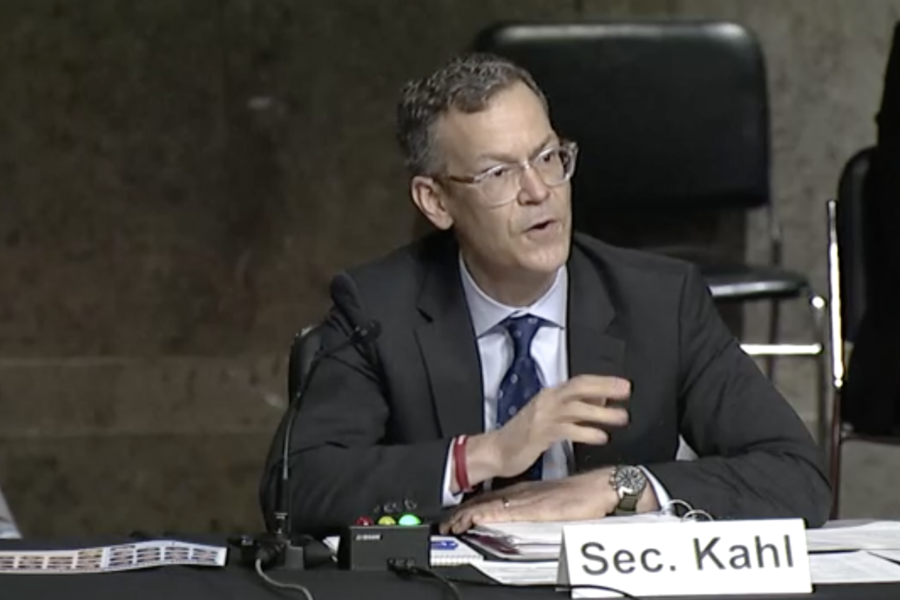The Islamic State’s Khorasan branch, responsible for the suicide bombing that killed 13 U.S. service members during the evacuation from Kabul, could develop the capacity to strike outside Afghanistan within “six to 12 months,” the Pentagon’s policy chief warned Oct. 26.
Undersecretary of Defense for Policy Colin H. Kahl, testifying to the Senate Armed Services Committee on the security situation in Afghanistan, added that al-Qaida could develop the same capacity within one to two years. Both terrorist groups, he said, already have the intent to strike the U.S.
Back in July, John T. Godfrey, the acting U.S. Special Envoy for the Global Coalition to Defeat ISIS, warned that ISIS-K remains a “serious threat” and said he agreed with military officials that the group could reconstitute capabilities within two years.
That assessment, however, was before the final withdrawal of American troops and the collapse of the Afghan National Security Forces, leading to the Taliban seizing control of the country. Now, the threats posed by ISIS-K and al-Qaida highlight the uncertainty surrounding future terror threats from Afghanistan.
ISIS-K and the Taliban are each other’s “mortal enemies,” Kahl said, but the Intelligence Community is not yet sure of the Taliban’s ability to prevent ISIS-K from developing capabilities. In the Doha agreement signed in February 2020, the Taliban agreed to renounce al-Qaida, but officials have testified that it never abided by that condition of the deal. Kahl indicated Oct. 26 that the two groups’ relationship remains complicated but said the Taliban is “wary” of letting al-Qaida use Afghanistan to launch external attacks due to fear of international reprisals.
The timeline Kahl articulated for ISIS-K and al-Qaida was based on estimates from the Intelligence Community, but “those estimates … are based on no U.S. or coalition intervention,” said Army Lt. Gen. James J. Mingus, director for operations for the Joint Staff. “The goal would be to keep those time horizons where they’re at now or push them even further.”
Right now, the only way for the Defense Department to monitor that threat and intervene is through “over-the-horizon” capabilities, the closest of which are stationed in the Persian Gulf area.
Mingus, echoing comments by Chairman of the Joint Chiefs Army Gen. Mark A. Milley and U.S. Central Command boss Marine Corps Gen. Kenneth F. McKenzie Jr., said conducting counterterrorism efforts from the Gulf, a several-hours flight from land-locked Afghanistan, is “harder, but we believe we have the assets in place right now if necessary to disrupt and or degrade the terrorist networks in Afghanistan.”
“We are deploying ISR over Afghanistan every single day,” Kahl added. “We also have national technical means. … We are sharing intelligence with regional partners and with our other partners, the U.K. and others, who are very focused on this problem set. So we will get after this challenge and we will try to grow our capability to get after it.”
As part of the effort to grow capabilities, the U.S. has had conversations with Uzbekistan and Tajikistan, two countries that border Afghanistan, about basing agreements, Kahl said, though he declined to discuss more details in an unclassified setting. Pakistan, another Afghanistan neighbor, has also been “pretty good” in working with the U.S. on counterterrorism negotiations, Kahl added.
“Pakistan is a challenging actor, but they don’t want Afghanistan to be a safe haven for terrorist attacks, external attacks, not just against Pakistan, but against others,” Kahl said. “They continue to give us access to Pakistani airspace, and we’re in conversations about keeping that airspace open.”

